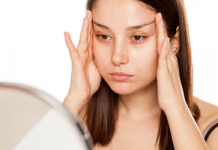If you notice that you or your partner have no passion for love, do not rush to diagnose problems with his balls. Perhaps you should take a closer look at his liver rather than at his messages in the smartphone or his likes in social networks. It turns out that problems with this organ can directly affect the level of sexual activity.
 The liver does not produce sex hormones, but it plays a key role in their circulation in the human body. First, the liver produces cholesterol, a building material for steroid hormones. It is through this chemical transformation that “male” testosterone and “female” estrogen are obtained. Secondly, the liver is engaged in the inactivation of hormones. Simply put, it destroys and removes them from the body. It turns out that the amount of sex hormones produced and how soon they leave the human body depend on the state of the liver. Both are important for good health and a healthy sexual attraction. Next, let’s separately consider what happens to hormones in men and women with liver failure and how to improve the situation.
The liver does not produce sex hormones, but it plays a key role in their circulation in the human body. First, the liver produces cholesterol, a building material for steroid hormones. It is through this chemical transformation that “male” testosterone and “female” estrogen are obtained. Secondly, the liver is engaged in the inactivation of hormones. Simply put, it destroys and removes them from the body. It turns out that the amount of sex hormones produced and how soon they leave the human body depend on the state of the liver. Both are important for good health and a healthy sexual attraction. Next, let’s separately consider what happens to hormones in men and women with liver failure and how to improve the situation.
The reaction of the male body to liver problems
Hormones responsible for sexual desire and erectile function in men are called androgens. Testosterone is perhaps the most famous of androgens. If there is not enough testosterone produced in the male body, both the desire and the ability to have sex disappear at the same time, since endocrine erectile dysfunction develops against the background of a hormone deficiency. Hence, erection problems begin.
Another situation is when enough testosterone is produced, but the liver does not destroy it in a timely manner. It may not seem terrible, but the situation is not so simple as well. Undestroyed male hormones are transformed into female ones. That is why in male patients with cirrhosis we often see the breast whose size many women could envy.
Other signs of an increased level of female hormones in the male body are the deposition of body fat, the disappearance of hair in places where men normally have it and women do not, rashes on the skin, and acne. Of course, there are problems with sexual desire and erection.
The reaction of the female body to liver problems
A woman with liver disease can have sex, but as a rule she has no enthusiasm connected with it. The fact is that the asthenic syndrome develops when the liver fails. It manifests itself in weakness, fatigue, physical intolerance, depressed emotional state. All these symptoms are due to the violation of detoxification, which mainly depends on the liver. Slags and toxins accumulate in the body and, figuratively speaking, they kill it slowly.

Over time, a woman develops asthenic depression. It is resistant and is not related to the degree of stress. Overwork is caused by the most simple actions, such as brushing your teeth and washing your face in the morning. There is apathy, pessimism, a sense of helplessness and hopelessness. Anhedonia develops as well, which is the loss of ability to experience pleasure from something. In case of anhedonia, a person loses motivation for the activities that usually bring positive emotions, including sports, music, sexual activity and social interactions.
In addition, the production of the necessary female hormones is decreasing and the level of “alien” male hormones is growing. In case of violating estrogen utilization, a woman faces pain and tightness in the chest and pain during menstruation. The picture looks joyless. Naturally, in such circumstances, the issue of sex simply does not emerge.
How to return to normal sexual activity
Stop for a moment and look at yourself. In the flow of daily affairs, we stop paying attention to what we eat, what we drink, how much time we spend in the fresh air, what medicines and in what quantity we take. The most common liver problem in the world at the moment is non-alcoholic fatty disease. To make it develop, it is enough to eat high-calorie food and bring your waist up to 80 cm or more (for men – 94 cm or more).
If you are abusing alcohol, this is your road to alcoholic liver disease. If you are careless about medications, you will get a drug liver disease and all the implied consequences. Including a decrease in sexual activity.
If your life has a risk factor for liver disease, it makes sense to check the condition of the organ. Test your blood for liver enzymes and make an ultrasound examination of the abdominal organs. At the initial stage, the liver responds well to treatment therapy. It usually includes ursodeoxycholic acid-based hepatoprotectors, diet and minimal physical activity (walking 30 minutes a day).

Diet to improve the liver
The daily norm of food products during a diet for a sick liver should include:
- proteins – up to 80 g, including 50% of animal origin proteins;
- fats – up to 80−90 g, including 30% of vegetable origin;
- carbohydrates – up to 400 g, with the energy value of 2400−2800 kcal.
It must be remembered that the diet cannot restore the functioning of the affected organs. It only eliminates the factors that provoke an exacerbation and also contributes to the recovery processes.
It is recommended to eat soups: dairy, vegetable, with cereals, fruit. Soups should be meatless. Soup dressing cannot be fried. Lean, fat-free meat (beef, poultry, ham or tongue) and fish (perch, bream, hake, saffron, cod) are allowed. Cooking methods include boiling or steaming, baking boiled fish and meat in the oven, cooking fish aspic.
Milk, yoghurt, and cottage cheese should be consumed no more than 200 g per day. You can cook dishes from cottage cheese: casseroles, souffles, mild cheese. It is advisable to boil porridge on water or with a small amount of milk. Moreover, 1,5−2 l of fluid should be consumed per day.
Yesterday’s pastries, bread, both white and black, as well as bran are recommended. No more than 2 times a week, some baked products (buns or pies) can be eaten, but the dough should not contain butter. Boiled eggs (no more than one egg per day) or an omelet, if it is also cooked from only one egg. It is recommended to eat raw and boiled vegetables and greens, as well as various vegetable dishes (side dishes and soups, stews). Carrots and beets are particularly helpful.










